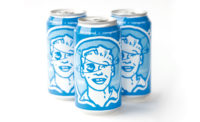Healthcare is a booming business in the United States, and that fact is creating tremendous growth opportunities for both pharmaceutical and medical device packaging. A just-released study by PMMI (pmmi.org) points out that the U.S. was by far the world’s largest healthcare market in 2015, with sales of pharmaceuticals hitting $1.1 trillion and medical device sales reaching $350 billion.
Companies in both segments face similar challenges when it comes to packaging. The industry is heavily regulated, with stringent rules designed to protect consumer health. Each segment is preparing for game-changing regulations on either serialized product identifications for pharmaceuticals or Unique Device Identification (UDI) that will enable medical devices to be identified throughout the distribution and use cycle.
The industry also has seen massive consolidation through mergers and acquisitions. Newly formed companies are working to integrate operations, but find they must quickly plan to replace outdated, legacy packaging lines while manufacturing products on which people’s lives depend. All these systems must be tied together to collect, store and analyze data that are key to the nation’s safety and welfare.
Due to rising costs of pharmaceuticals, use of generic drugs are on the upswing. Meanwhile, demand for devices and drugs is growing dramatically in developing countries, where rising incomes allow more access to modern medical practices especially among aging populations.
MANUFACTURING MARKET CHANGING
The rise in demand has also led to increased use of contract manufacturing and packaging, according to Donna Ritson, consultant and author of PMMI’s 2016 Pharmaceutical & Medical Devices: Trends and Opportunities in Packaging Operations. The study says that although all sizes of medical product companies are using contract help, rising demand is leading to “virtual manufacturing” in which many small-to-medium pharmaceutical companies do not actually produce any of their own goods. In addition, drug and device manufacturing in many cases is moving closer to the market where it is being used. This has resulted in many generic drug manufacturers returning their production to the U.S.
It’s no wonder that more than half of the medical product companies are planning to increase their capital spending on packaging equipment over the next two years, Ritson says. She points out that 4 of 5 respondents to the study’s survey say they will be sourcing packaging equipment, and they plan to buy new machines. Only 1 in 4 will consider used or retrofitted equipment. The older equipment may be too expensive to maintain, often relies on more mechanical drives, and frequently can’t meet update safety standards. Changes also can require an expensive and time-consuming process validation. Newer equipment can add more precision and diagnostics through the use of automation, electronic controls and servo drives.
The study quotes one procurement expert as saying: “The demand to update equipment, even before end of life, is putting a huge strain on OEMS worldwide, and they are being swamped by increasing demand.”
The types of equipment being sought run the gamut from capsule counters to fillers and case packers. The machines in most high demand, though, will likely be those involved in serialization and UDI. The medical industry continues to be plagued with problems such as counterfeiting and products recalls, which serialization is designed to help detect and limit any damage. This involves the application of serial numbers onto product packages using a barcode, 2D or data matrix and/or a human readable alphanumeric code. The codes are usually applied at the packaging line, where each level of packaging (carton, case and pallet) is serialized and linked, or aggregated, so that all package levels are associated.
Under the Drug Supply Chain Security Act, FDA requires that drug manufacturers place a unique product identifier on certain prescription drug packages by November 2017. According to a recent report by Pharma IQ, 25.7% of participants have started serialization rollouts and only 13.5% have fully implemented their approach.
PLANNING LAGS ON SERIALIZATION
Many companies have been waiting until the last minute, and there has been a lack of planning, says Daniel LaPierre, vice president of NJM Packaging. At the packaging level, there are more players who can deliver the necessary equipment, he says, but “there are not enough suppliers at the software and the enterprise resource planning levels to meet the expected demand, and only a few that have the experience and the horsepower to be able to deliver solutions. There are tremendous costs to integrate all this. It’s a big problem, and the government is not inclined to delay implementation.”
Changing regulations and market conditions also are leading to innovations in packaging. While the U.S. has an infrastructure in which pharmacies dispense many prescription drugs in bottles, some drugs – especially over-the-counter medications – are available in unit-dose packaging, such as blister packs or stick packs.
This type of packaging is more popular outside the U.S., says Georgia Mohr, marketing director, pharmaceuticals for Bemis Healthcare Packaging. Increasingly, pharmaceutical/medical suppliers are concerned with consumer interaction and acceptance of the packaging.
The blister packs, for example, might allow more branding opportunities. She pointed to Latin America, where cold-formed blister packs may be highly decorated with branding messages. These may be used for OTC and prescription drugs and are not sold in cartons as they often are in the United States.
KEEPING PATIENTS ON TRACK
Ritson pointed out that this type of drug packaging also aids in compliance, helping medical providers and insurance companies ensure that patients are taking their prescriptions regularly and using them properly – one of the leading concerns in healthcare. The PMMI study also shows that trends in patient compliance and custom drugs are driving shorter manufacturing and packaging runs.
When it comes to medical devices, packaging must keep the product sterile and protected from damage while offering ease of access. Many of these devices must be handled during surgical procedures, so they are packaged in thermoformed trays that allow them to be removed without damage. That’s why packaging suppliers increasingly are turning to user panels to help them design features such as finger grabs into these trays.
Mohr also says Bemis offers other innovations for pharmaceutical products, such as disposal pouches with child-resistant, pressure-sensitive closures that can prevent children and pets from exposure after use. The single biggest factor in materials used for pharmaceutical packaging, she says, is the barrier property of the films. Drugs have a high sensitivity to oxygen and moisture, and exposure to these may cause interactions or efficacy loss.





